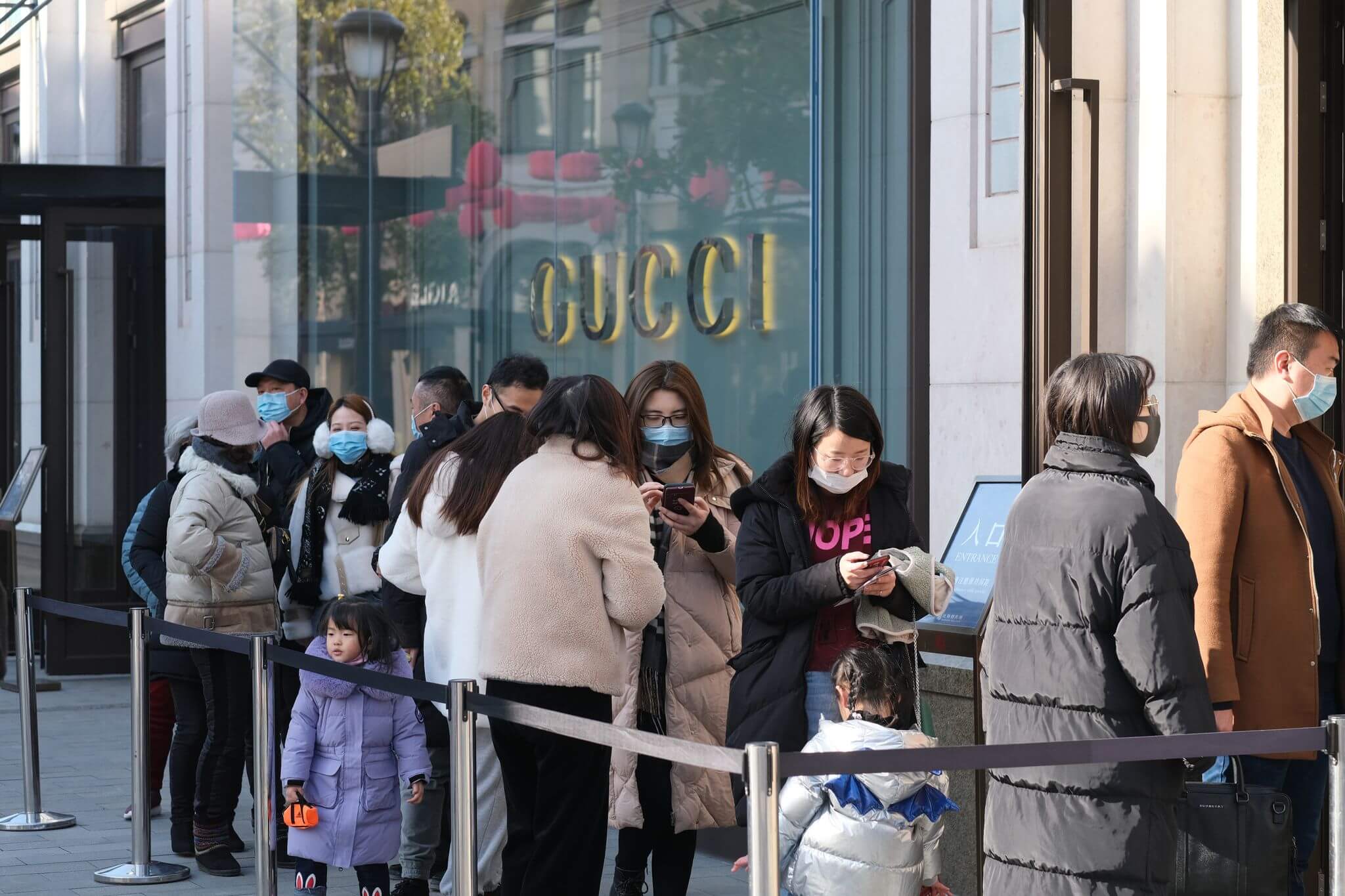During the last few months, China reopened. Some brands, such as Starbucks, are seeing increased sales both domestically and overseas, while others, such as Estée Lauder, Adidas, and Pandora, reported drops in revenue and customer traffic in Q1 2023. How does China really see things? This article analyzes the topic of China reopening and the opportunities for global brands in the biggest e-commerce market in the world.

Short-term Anxiety Will Still Affect Consumer Confidence
It has taken months for China to reopen after taking strict measures against COVID-19. As the country recovers, the Chinese government is lifting restrictions on wearing masks in public transit and shopping malls. It indicated that offline foot traffic in China has returned to normal. For instance, Starbucks’ same-store sales increased for the first time in Q1 2023 since 2021.
Compared to March's announced value of 10.6%, there was a significant increase in the average forecast for the year-over-year growth rate of total retail sales in April, which was 21.69%.
Additionally, the Shanghai Social Survey and Investigation Center recently reported that the Shanghai University of Finance and Economics Consumer Confidence Index was 111.9 points for the first quarter of 2023, an increase of 11.2 points from the previous quarter, and 7.5 points from the previous year.
The main factor preventing a nationwide Chinese consumer confidence recovery is anxiety about their income outlook, which affects average Chinese consumers' decisions to spend more on nonessential items. As consumers become more price sensitive, they are more selective about the products they buy.
However, there are still good investment opportunities available despite consumers’ current caution. According to the Shenzhen Stock Exchange, 189 million new stock trading accounts were opened in March 2023. This indicates that people are optimistic about the country's economic recovery.
It is critical to highlight that the reduction in consumption is most likely a short-term effect. As consumer confidence grows, the market will recover and stimulate the economy to develop. Overall, the reopening of China is a wonderful move, and we should anticipate the country to make further progress as it recovers from the pandemic.
Chinese Demand for Passports and Visas Soars
The return of Chinese travelers to Europe and North America caused a stir earlier this year, but actual data revealed that big duty-free sales are recovering slowly. The recent Labor Day holiday demonstrated a great desire among Chinese citizens to travel and consume domestically. Domestic travel is rising significantly faster than international travel, a trend experts expect will last for some time.
Interestingly, TD Wealth recently announced in the media that more Chinese visitors are lining up for visa and passport renewals, as corroborated by German consulates and visa centers, which are adding staff to meet the increased demand. Despite the slower domestic spending recovery, the spike in demand for passports and visas indicates that Chinese tourists are keen to resume foreign travel. It was anticipated in 2019 that Chinese tourists spent a total of 5.6 billion EUR ($6.01 billion US) in Germany. These visitors will be a significant driver of sales of luxury and premium clothes and cosmetics when they return to Europe.
It was more convenient for both Chinese citizens and foreigners to cross the borders after the China Immigration Inspection Center relaxed restrictions on May 15. This will most likely make it smoother for tourists to enter and exit the country, as well as aid in the recovery of overseas travel. There will be a surge in mainland Chinese customers in Hong Kong and Macao in the short term.
Furthermore, the Japan Visa Center reports that limitations on Chinese travelers would be eased soon by waiving taxation reports for multi-entry visa applications. Consumers are expected to return to Ginza Tokyo, one of Japan's most visited luxury retail outlets, helping the retail industry recover.
Major Chinese airlines expect profitability to return by the end of 2023 due to increased domestic and international travel. Increased international flights and cargo capacity may also result in a gradual decline in air freight prices, as evidenced by the latest Baltic Exchange Airfreight Index (BAI), which shows that rates are returning to pre-pandemic levels.

Gradual Improvement of Luxury Retail Sales
According to recent statistics, luxury retail sales are gradually rebounding. During its most recent investor call, LVMH announced excellent growth in China. Offshore sales, on the other hand, are expanding faster than domestic sales. LVMH is transferring its management team from Hong Kong to China in order to better focus on the country's market growth. It observed that Chinese consumer demand for luxury items has contributed to a 17% boost in sales as China has emerged from its prolonged COVID lockdown.
Mytheresa, a German luxury retailer, is likewise attempting to enter China's expanding luxury sector. To carve out a market niche, CEO Michael Kliger claimed that the company will hire personal shoppers and host in-person events. He stated that they expected China to expand at twice the global rate, 40% over the next few years, since they focus on a very specific customer base. Currently, Mytheresa sells to China through its own worldwide site and a cross-border flagship store on JD.com.
On the other hand, expectations around Chinese customers' behavior in the next few months are varied. Tod’s CFO Emilio Macellari remarked that Chinese customers are primarily purchasing at home, and he does not anticipate a huge number of Chinese passengers traveling around the world before the end of the summer. Tod’s sales in China were unsatisfying at the start of the year, but they began to increase in the second half of January. However, sales in the Greater China region increased by 29% in the first three months, according to Reuters.
Overall, signs in the luxury retail sector in China point to recovery, although there are still uncertainties surrounding Chinese consumers’ behavior in the near future.

E-Commerce Followed Digital Trends After the Pandemic
Global businesses seeking a comeback should meet the needs of consumers, who have undergone substantial transformations over the last three years in the ever-changing Chinese market. Understanding and adjusting to changes in the e-commerce industry, the rise of livestream sales, and the advent of innovative retail technology are critical success factors.
A major development is the expansion of e-commerce. Chinese customers are increasingly spending time on short-form video platforms, where they discover new companies via compelling video content. Douyin, the Chinese version of TikTok, is at the forefront of this trend. Its e-commerce branch is quickly gaining traction, riding the wave of the short-form video explosion. According to Statista, Douyin e-commerce is expected to become China’s fourth-largest e-commerce platform in 2022, with a Gross Merchandise Value (GMV) exceeding 1.5 trillion RMB ($214 billion US).
Moreover, livestream sales have also increased in popularity. Chinese livestream e-commerce generated an astounding 3.5 trillion RMB ($500 billion US) in GMV in 2022, with an impressive year-over-year growth rate of 48.2%, according to Taobao Livestream. This was fueled by the increasing number of hours customers spend on livestreams. The impact of livestream as a sales channel cannot be underestimated because it gives consumers an engaging experience, instilling a sense of urgency, excitement, and trust.
WeChat mini-programs have become another essential platform for retailers looking to break into the Chinese market. Luxury companies, in particular, have grasped the value of creating WeChat mini-program shops. These mini-programs provide a streamlined shopping experience within the WeChat ecosystem, helping firms to increase client loyalty. To further improve client engagement, firms should consider creating private domains and offering personalized shopping assistance, assuring a tailored and exclusive experience for their customers. Analysts also predicted that by 2022, the total GMV of WeChat mini-programs will have topped 3 trillion RMB ($429 billion US).
In the future, the rise of one-hour real-time e-commerce is set to transform the retail environment. According to market predictions, China's one-hour real-time e-commerce business will be worth 11.8 trillion RMB ($1.7 trillion US) by 2030. The increased adoption of online-to-offline (O2O) platforms (particularly Meituan) and the use of unmanned delivery drones and automated vehicles will drive this exponential expansion. This novel retail model not only provides ease and efficiency but also creates new potential for global businesses to contact Chinese consumers in real time.
Keep an Eye on the Development of Chinese Domestic Brands
The proliferation of Chinese local alternatives is a trend that global brands should be wary of. Chinese brands increasingly grab market share in the mass-market segment. They are also preparing to fight in the premium market in the cosmetics sector, which has traditionally been dominated by global giants such as P&G, Estée Lauder, and L'Oréal. Several domestic businesses, such as Proya, Winona, and QUADHA, have quickly achieved market momentum without having multinational names, while Douyin and short-form video excitement have boomed.
Similarly, after the milk powder incident involving tainted products, Chinese domestic brands are reclaiming market share in the milk powder business. Three of the top-five baby milk powder brands are currently manufactured in China, according to Nielsen. Leading the push is Feihe, a famous Chinese milk powder company with a hefty 20% market share in baby formula.
Growing national pride and confidence motivate the next generation of Chinese consumers. This mindset has resulted in a preference for homegrown brands that understand Chinese culture and are eager to connect, as shown by Chinese carmaker Li Auto displacing BMW in some customer selections. Chinese firms are also skilled at adjusting to social media trends and have the advantage of being more regionally attuned and able to respond quickly. Many digitally native Chinese firms are also expanding in offline retail, using an omnichannel strategy to gain a larger audience.
Do International Brands Still Have a Presence in the Market?
While Chinese indigenous companies are gaining traction, multinational brands continue to have a presence in China. They bring global recognition, reputation, and quality assurance that resonate with China's educated middle-class citizens with a global perspective. However, global businesses must adapt and differentiate themselves from domestic competitors. Understanding the distinct preferences of Chinese customers, effectively using digital platforms, and creating customized experiences are critical to grab and retain market share in this volatile marketplace.
Key Takeaways